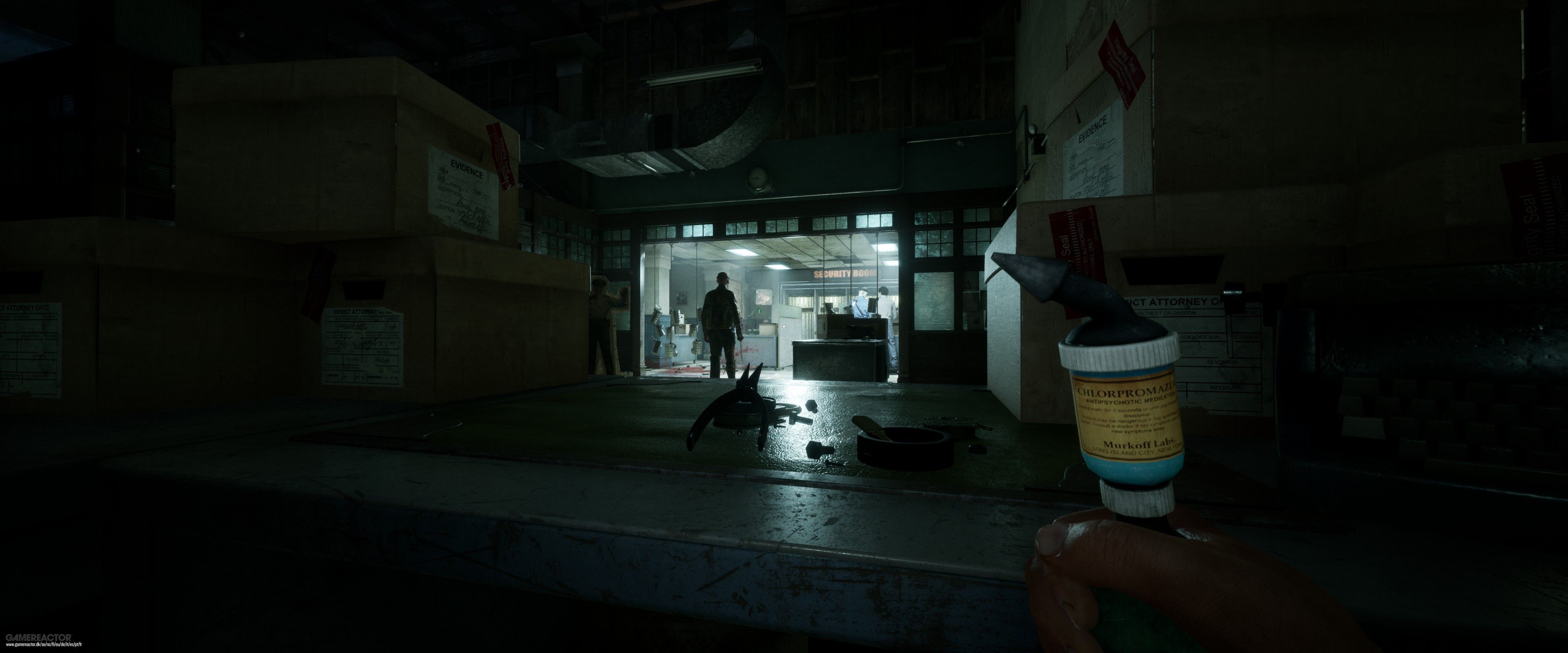The run of Red Barrel’s Outlast series wasn’t perfect. The first game was hailed as an amazing horror experience where we explored a mental institution from a journalist’s perspective. The second game, inspired by movies like Children of the Corn, plunged us into the cornfields of North America where we had to hide. The sequel was marked by hunting scenes and religious cults. However, it didn’t have that much of an impact due to its gameplay mechanics, which involved too much trial and error. Outlast: Trials is a little different from its predecessors and is placed chronologically before the first game.
We play a character with no home and no name, whose appearance can be chosen at the beginning of the game. We’ve been subjected to horrific experiments and are finally released into the world with only our psychiatrist as our friend and guide on our missions. We find ourselves trapped in a huge warehouse where the sinister experiments are being conducted, surrounded by other newly constructed buildings simulating a small town. The other test subjects have been released and now we find ourselves in a crazy world, accompanied by up to three friends.
It’s obvious that The Outlast: Trials is designed for four players. Although the narrative has an impact on the levels, it is immediately apparent that it is much more fun in company. To enter a level, you must choose one of the four revolving doors or sit on one of the four chairs. So it’s not surprising that my experience of the game is characterized by repeating and reusing levels in the so-called “Trials”. First we choose a mission and our team, then we enter the level based on the previously set parameters and complete the selected mission. In terms of game mechanics, it differs slightly from its predecessors, but without losing the qualities that characterize Outlast. We can slowly open the doors, the enemies will follow us if they spot us and the feeling of horror is always present.
Advertising:
What frustrated me are the genre’s already established shenanigans. In one of the first levels we have to infiltrate a police station and eliminate a witness. We start shooting and the electricity goes out and now you have to figure out how to go down to the basement, fix the generators, refill and restart. It usually shows us what we have to do and how the missions end, but you have to run like a marathon before you can complete everything. The experience is much better with multiple players, as you can carry more items, solve puzzles together, and complete the levels more easily. When we’re alone we’ll certainly experience more horror elements, but we still don’t get a narrative focused on specific protagonists like in previous releases in the series.
Mission selection is very fluid. Gameplay-wise, it’s very similar to the previous games in the series. On this occasion we don’t have a camera, but we do have night vision goggles. We can charge them with the batteries we found when the power runs out, but it’s important to conserve resources. The story manages to convey its theme very well and fits into the overall narrative of the series. Without giving away details, there are interesting aspects that can be discovered if we want to delve deeper into this universe. I particularly liked the world design with run-down, ruined and inhabited environments reminiscent of scenes from cities affected by recent violent riots. There are also artifacts and collectibles to be found. The maps will not only be populated by bosses and enemies, but also by people who w ant us to leave them alone. Although the maps we navigate through contain many buildings and other objects, Red Barrels has managed to create some pretty impressive environments.
The question remains if this is really what fans of the first two parts are looking for. Some aspects of the gameplay, such as the essence of the series and the visual design, are similar to previous releases. The level structure, missions, and general layout are reminiscent of games like Dead By Daylight, Last Year: The Nightmare, Back 4 Blood, and Phasmophobia. It’s an abrupt genre change, similar to what happened between Dawn of War and Dawn of War II. That’s not necessarily a negative thing. For example, I personally like the latter better than the former. I had a lot of fun dodging enemies, hiding from monsters, and advancing through levels. It’s nice to have abilities that make these tasks easier, like being able to choose an ability before you start that allows you to tear down barricades faster or escape easier. At the same time, I miss the more focused and targeted style of the series’ main games.
Advertising:
There is now a HUB that we return to between missions. The base of operations is a cell in an infirmary or psychiatric facility. There are beds, rooms and some characters that you can buy things from. Here we plan with our allies, test the equipment and buy what we need. I’m curious if people will like it. I have no doubt that this is, ironically, a test for a third game, although I have to say that I prefer the horror solo experience at the moment. Cooperative modes often require compromises for individual players, and that’s true here as well. For example, immersion suffers when you have to choose missions, maps, finding players in the lobby, and more instead of enjoying cinematic scenes that instantly take you to a new level.
Although the focus is on co-op, I love the world design, the characters and the audio is excellent. In general, the universe is still interesting. However, I notice that the feeling of horror quickly wears off, even though the variety of opponents is great and we feel constantly exposed to danger. If we go through the same level with different missions several times in a row together with our friends, the level of fear will decrease slightly. At the same time, it’s well made for what it is. We have very good voice acting, solid graphics, good art direction and fairly functional gameplay. There are technical glitches, the artificial intelligence needs a bit of maintenance and these are aspects the studio is working on. However, it is not yet available in version 1.0, since this is an Early Access version.
Still, I wouldn’t recommend playing The Outlast: Trials alone. I’d recommend checking it out if you want to experience something new with some friends who like Outlast. However, I don’t really like aesthetic aspects like painting the prison cell and other things, although the options were numerous and there was a lot to unlock with the coins you earn after missions.
The conflict between the legacy of the series and this new move is palpable. I’m undecided, on the one hand I’m looking forward to something new, on the other hand the levels don’t stand up to the constant repetition that is expected of them. You get exhausted too quickly. While I personally prefer to experience horror alone, I recognize that many people love experiencing spooky situations with company, which can be interesting. Ultimately, it’s a competent foundation that will require a little more work during Early Access to make 1.0 as good as it can be.
If the studio manages to fix some of the issues I’ve found, add more content, and improve its work, we might give it a higher rating. In his current state, I was amused but not impressed. Some aspects are good, others not so much. If we have a group of friends and we’re looking for something spooky to play with, we should consider Outlast: Trial. I hope that the early access version will be a multiplayer spin-off. My rating is also partly justified by the disappointment that the release is aimed at a different audience than the first two versions, as I quickly realized I didn’t feel as engaged as I did with the previous ones.














